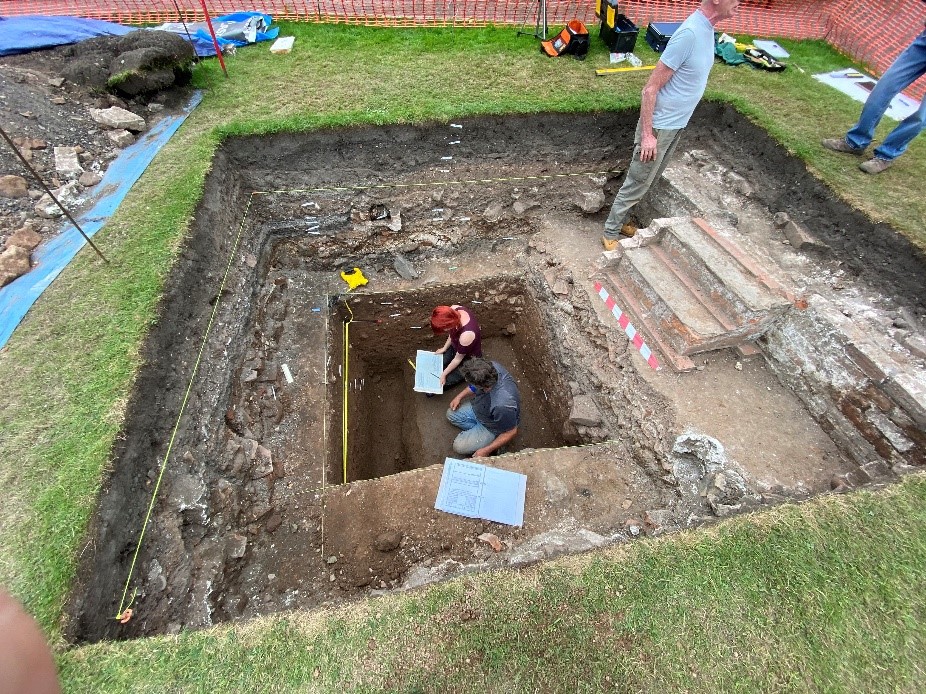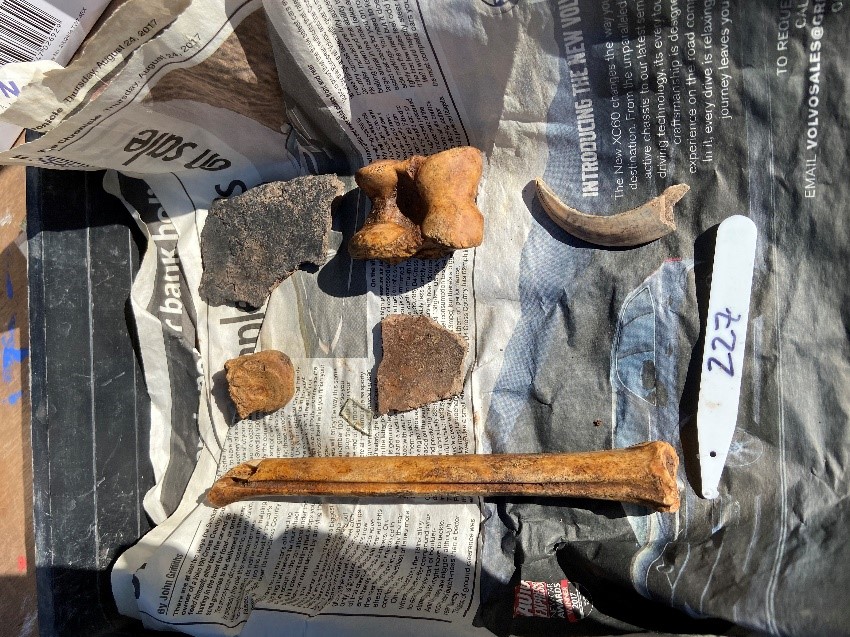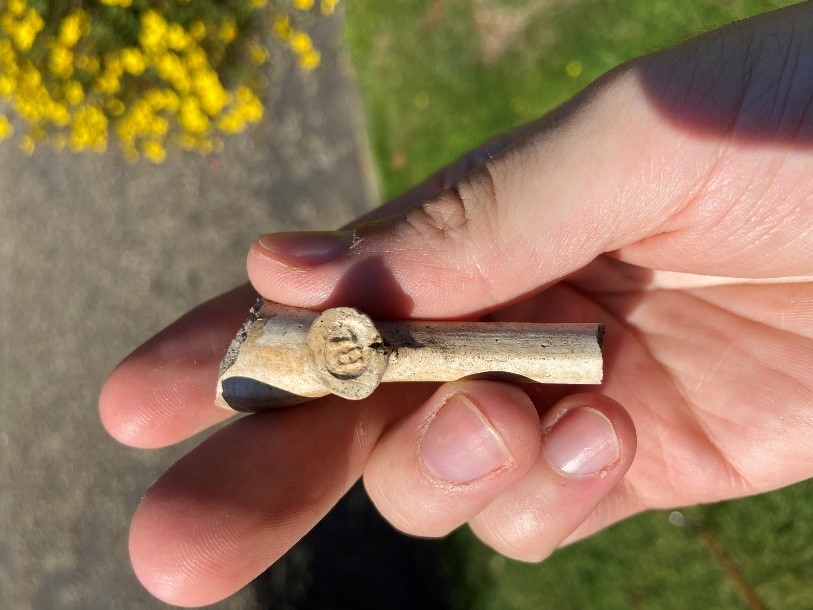Blog: Shrewsbury Castle dig – Day 15: Visitors interact at the sifting station
Day 15: Tuesday 15 September 2020
Tuesday began cooler than the heat that we had experienced only a day earlier, I had been assigned an early task of assisting with the dig.
I had already spent most of Monday’s warm afternoon shovelling away in the trench, so I was quickly reassigned to the sifting station. There I had the opportunity to interact with visitors who were quite keen to learn what we had found from our most recent digging.
Visitors were increasingly interested in learning about the significance of our finds. We established that we were excavating another medieval layer of earth, dating between the 13th and 14th centuries. Evidence of this period is supported by our discovery of various bone and pottery fragments. These reflect the differences in social status of those that had once inhabited both Shrewsbury Castle and the surrounding area.

Fragments of pottery featuring scorched markings suggest that these were clay pots used by those of lower social status. These fragments became one of the most common finds, which is usual as this type of pottery was both commonly used and frequently disposed of. This is contrasted by the finding of more green glazed pottery fragments, possessed by those of higher social status, and the increasing quantity of animal bones potentially suggests this area was being used for the preparation of meat for the castle.

Evidence of a richer diet with lower status pottery. Photo: Ryan Locklin.
Visitors were also pleased to view some examples of the many clay pipes on display, found over the weekend and which date back to the 17th/18th centuries.

A Clay Pipe shows the maker’s initials. Photo: Ryan Locklin.
Wednesday 16 September will consist of the final digging process which will aim to establish the deepest section of the trench so far. We hope to reach a pre-conquest level before finding any natural layers.
by Ryan Locklin, University Centre Shrewsbury, on behalf of all volunteers at the Shrewsbury Castle dig

